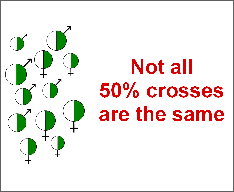
© 2012 -
This site does not use cookies




Training
Training on Goat Care
Most Ugandans have a basic working knowledge of goats and how to care for them. However, this can lead to overconfidence with the improved breeds, so training is needed in specific areas.
• Any goat which is growing faster or producing more milk than local goats will need more and better feed. more…
• Because of the danger of disease, the high-
Training on Record Keeping
Probably the biggest challenge that this programme faces is the issue of record keeping. Records are not kept at all by keepers of local livestock. Some of the older people have very poor literacy skills, and many others have hardly practiced what they learnt at school.
Consequently a major part of the training and support is concerned with record keeping
-
Training on the breeding plan
There is general awareness that breeding stock can be improved by cross-
Selective Breeding
Selective breeding is a very poorly understood concept in rural Uganda. This is especially
true with regards to selecting good males for dairy animals. Coordination of breeding
at village level is almost unknown. So right from the initial introduction of the
programme, this topic is included in the training. It also features strongly in the
follow-
Diagramatic representation of selection, as used in the training



